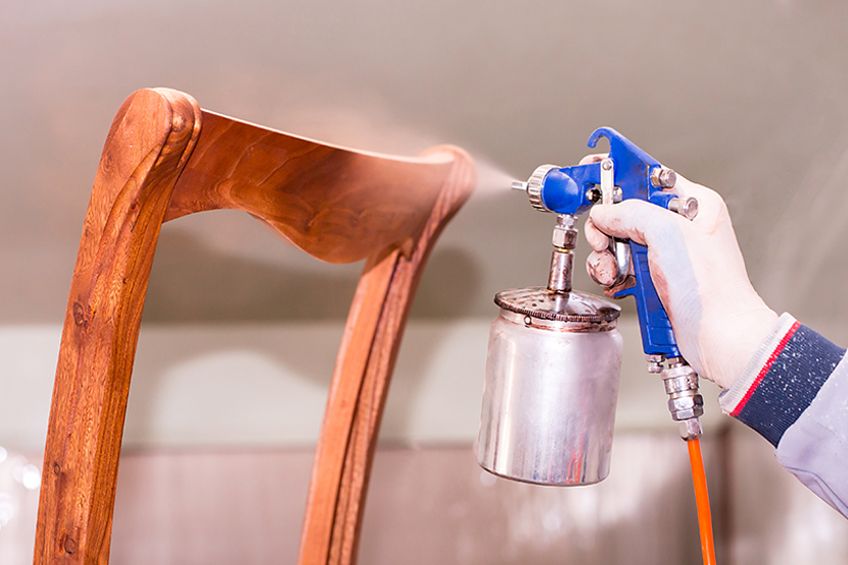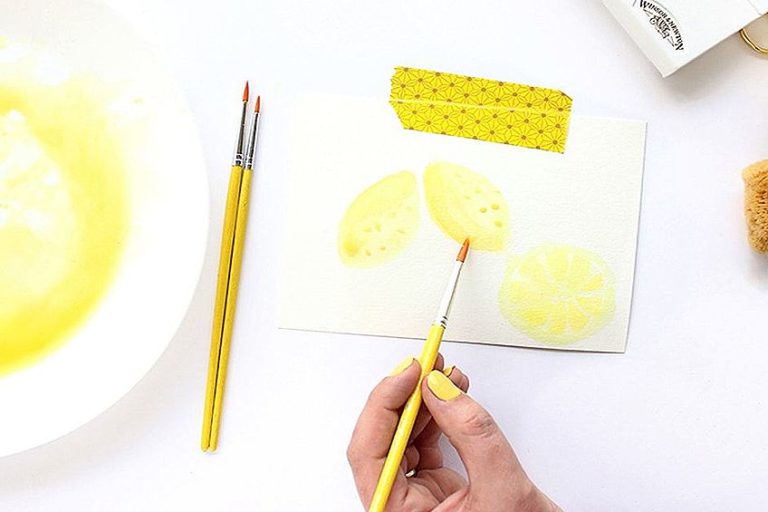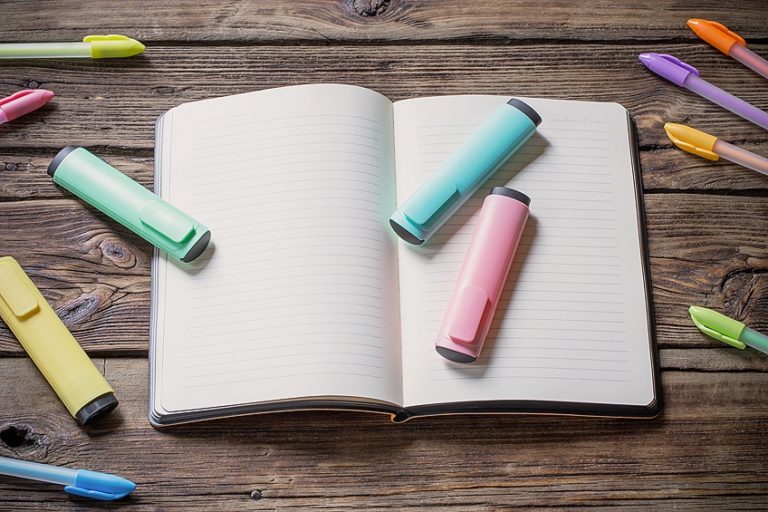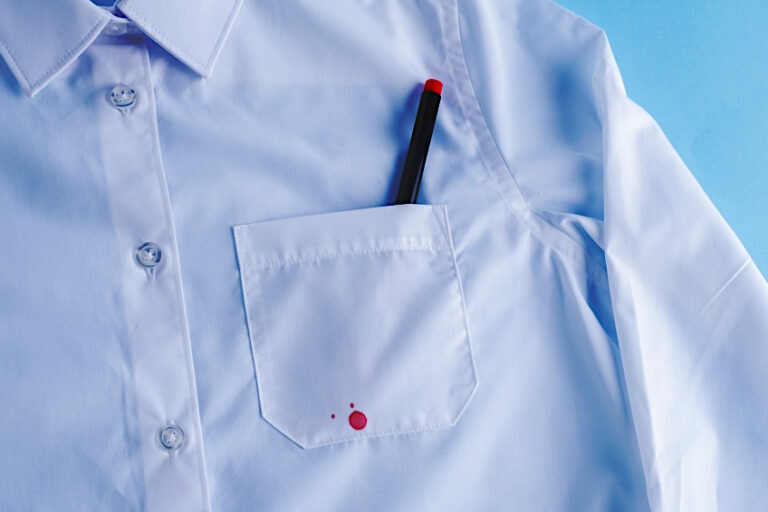Best LVLP Spray Gun – Review of the Top LVLP Spray Gun Kits
This post may contain affiliate links. We may earn a small commission from purchases made through them, at no additional cost to you.
Over the years, you may have been paying a lot of money to professional painters for certain paint jobs around the house. However, now you are considering doing the job yourself, as you have become an ardent DIY enthusiast and you are tired of spending time and money on an old paintbrush or roller system. You are now ready to buy yourself a spray gun, but you are not sure which one to buy. There are a lot of different spray guns on the market, and in this article, we will be introducing you to the best LVLP spray gun and explaining to you what it is, how it works, and where it is used.
Table of Contents
- 1 What is a Low-Volume Low-Pressure Spray Gun?
- 2 The Different Types of LVLP Spray Guns
- 3 Things to Consider When Buying Your LVLP Spray Gun
- 4 Our Top Recommendation for the Best LVLP Spray Gun
- 5 How Does an LVLP Spray Gun Work?
- 6 Differences between an LVLP and an HVLP Sprayer
- 7 Advantages and Disadvantages of an LVLP Paint Sprayer
- 8 How to Clean Your Spray Gun
- 9 Benefits of Using a Low Volume Low-Pressure Spray Gun
- 10 Frequently Asked Questions
- 10.1 Is an LVLP Paint Sprayer Better Than an HVLP Sprayer?
- 10.2 What is an LVLP Spray Gun?
- 10.3 Can you use Latex Paint in an LVLP Spray Gun?
- 10.4 Can the LVLP Sprayer Last a Long Time?
- 10.5 Does the LVLP Sprayer Have any Disadvantages?
- 10.6 What Are Some LVLP Spray Gun Applications?
- 10.7 What Is Meant by a Siphon or Gravity Feed LVLP Spray Gun?
What is a Low-Volume Low-Pressure Spray Gun?
The term LVLP stands for the low-volume low-pressure spray gun. An LVLP spray gun is the type of paint sprayer that gives you a consistent fan spray pattern that comes out of the spray nozzle at a lower pressure. This is a spray gun for small compressors, which means it needs a compressor that has a less powerful air supply, allowing you to spray paint at a lot lower volume and pressure at the nozzle.
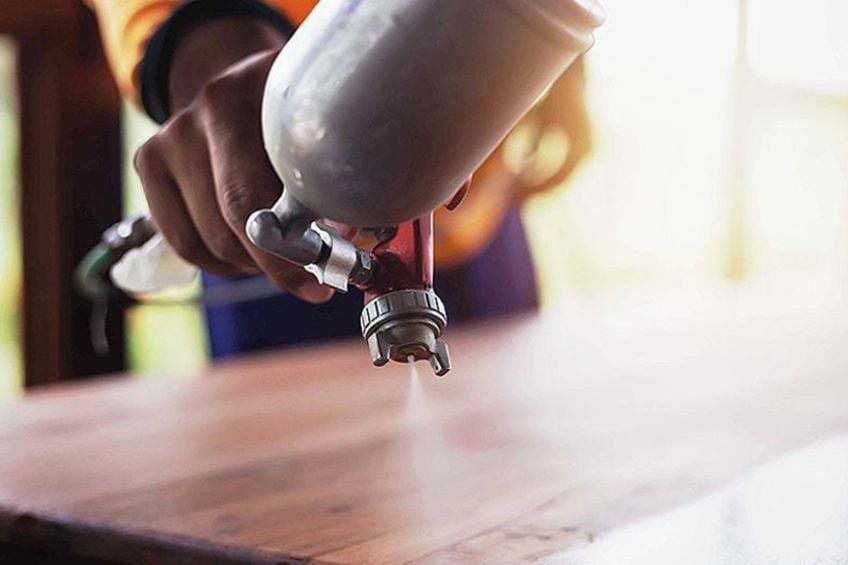
The LVLP spray guns are mostly used for small jobs like painting doors and bathroom cupboards. They are also used to paint patterns and logos on automobiles. You will also find these types of spray guns in woodworking and furniture shops and are very popular around the home with do-it-yourself enthusiasts. This type of spray gun is limited to smaller areas, as it has a smaller nozzle and ejects the paint at a lower pressure and volume.
If you agree that an LVLP paint sprayer is the right one for your purposes, then you will be saving a lot of money and time. You will be investing in an effective spray gun that will last for a long time.
The Different Types of LVLP Spray Guns
Not all spray guns are the same, as there are several different options you need to consider, which seems to make it all that much harder to choose the right one. Take heart, for we will be explaining the differences for you. With spray guns, there are only two main types, and they are bleeder spray guns and non-bleeder spray guns.

Bleeder vs. Non-Bleeder Spray Guns
These types of spray guns provide you with constant airflow whether you pull the trigger or not, which will speed up the drying process and will assist in keeping the cap from clogging up. However, you have less control over the spray gun. In contrast, non-bleeder spray guns are the more commonly used spray guns, and the moment you release the trigger, the airflow will stop. This gives you more control over the paint that comes out of the gun, but it increases the chance of the cap clogging up.
If you want more control, then a non-bleeder spray gun is the best option for you. If, however, control is less of a concern for you than the prevention of clogging, a bleeder spray gun may be better.
Different Feed Systems
There are also two different feed systems of LVLP spray guns; these include the siphon and gravity feed spray guns. These different feed systems move the paint from the cup to the nozzle, which generates your spray pattern. The use of either of these options will not get in the way of the quality of the finished job.
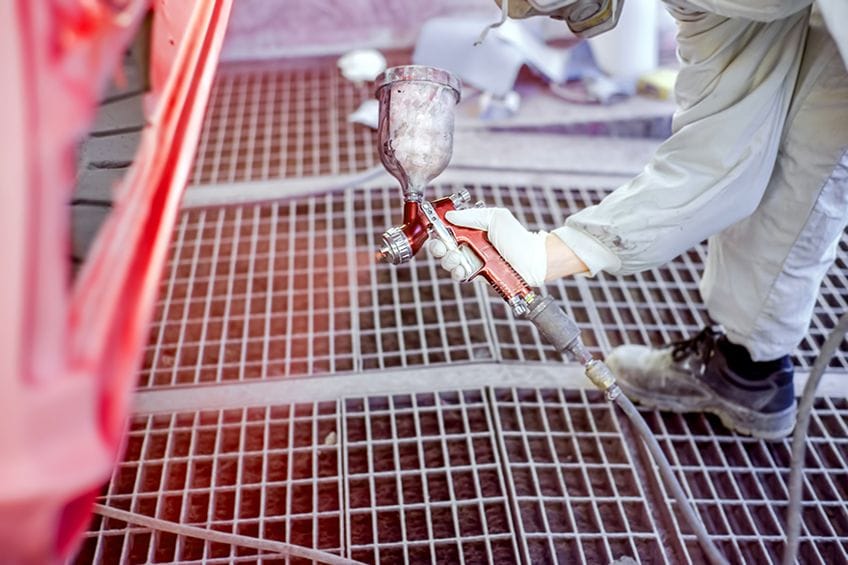
Siphon Feed LVLP Spray Guns
These types of spray guns have been in use the longest and are very reliable. They are made with the paint container at the base of the gun. This system makes use of a complex siphoning mechanism that can feed the paint to the nozzle, which requires more air pressure. However, this may cause spots, making the application a lot less precise. The smaller compressor and low pressure do create a few problems when compared to other spray systems.
Gravity Feed LVLP Spray Guns
With this type of feed system, the paint cup is situated at the top of the gun and needs less air pressure to feed the paint to the nozzle. This system allows smaller amounts of paint to be used each time, which can reduce the amount of overspray, making less waste. These spray guns are more efficient and give you a smoother and finer finish.
The gravity feed LNLP spray guns are also very versatile and can be used for woodwork, automotive, industrial materials, and marine purposes.
Things to Consider When Buying Your LVLP Spray Gun
You need to do a lot of research before you go out and buy your LVLP Spray Gun, to make sure you buy the right one that suits your particular requirements. Remember, most spray guns available have a very similar design, which makes it more difficult to choose. However, here are some important factors you need to consider first.
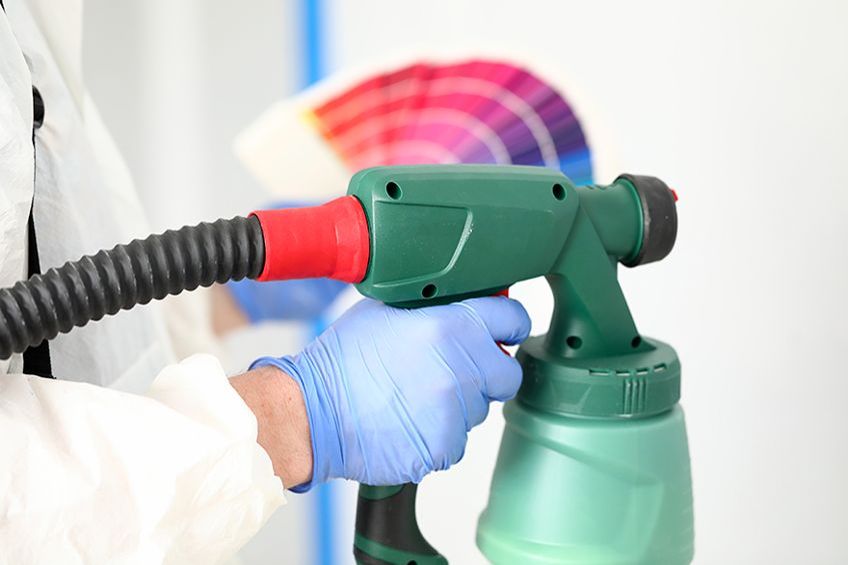
Maintenance Requirements
Most of the spray guns operate almost the same, but you need to choose one that is easy to handle and maintain. Maintenance can, at times, be very difficult, and if not done correctly, can become costly. It is of utmost importance that you clean your spray gun after each use without fail, otherwise, it may reduce the durability of your spray gun. If you choose a spray gun that has a complex design or working process, it may also be very difficult to clean properly. Over time your spray gun will show evidence of wear and tear and without the proper and timely maintenance, the damage can become permanent.
The maintenance does not only include cleaning your equipment, but you need to lubricate it as well and some of the O-rings may be difficult to get to.
Materials the Spray Gun Made From
You need to buy a spray gun that is lightweight and easy to use. Most experts and users agree that an aluminum sprayer is the best. The aluminum spray gun is ideal as it is perfect for the professional and beginner and will serve you well for many years. You do not want to buy a spray gun that is too heavy and bulky, as it will prove difficult to handle and you will tire easily. So, a lightweight spray gun will allow you to take your time and do a better job.
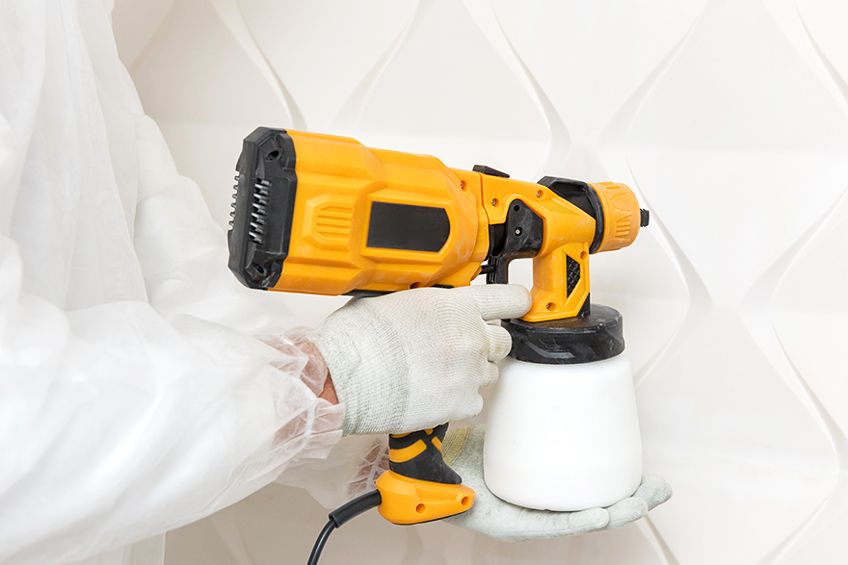
The Spray Gun Needs to be User Friendly
If you are a beginner, then this factor is important because you need to choose a user-friendly spray gun. Many spray guns require a lot of experience before you can understand how they work properly. Therefore, we suggest that you buy a paint sprayer that is simple to operate and does not require a lot of professional help. Make sure there are sufficient controls so that you can adjust your sprayer to meet your particular needs and requirements.
Type of Project
This factor is most probably the most important, as you need to buy a spray gun that will suit your needs, whether it is a detailed job or a larger job. The right choice of spray gun will only be effective if it can meet the requirements of your particular project. For example, you can use an LVLP spray gun for fences, doors, cabinets, or any other smaller and more detailed work.
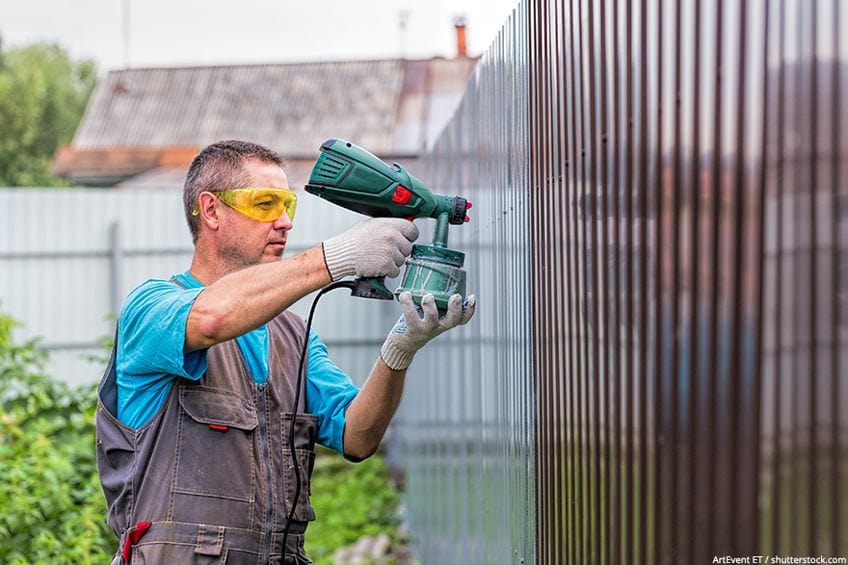
LVLP Spray Gun Reviews
When buying your spray gun, it is a good practice to find websites that list LVLP spray gun reviews. Do your homework and compare the different types and brands, by doing this, you will find the right one for you and save yourself a lot of money. You will be able to draw from experienced users, their views, and problems they have encountered, saving yourself from experiencing similar problems.
Performance Delivery
The overall performance delivery or estimated output of all spray guns are calculated using psi (pounds per square inch). This calculation will determine if the sprayer can handle the job you are doing. Lower outputs are used where you are doing small and more detailed work, and higher outputs are for bigger and general applications.
The psi for smaller and more popular spray guns is usually low, and any variation of this measurement is important because other applications are based solely on the psi.
Type of Spray Gun and Fan Pattern Size
You need to be sure about the type of spray gun, do you want a bleeder or non-bleeder gun, a siphon or gravity feed gun? All of this is important, for it governs the airflow and also reduces the risk of the air cap clogging up. You need to decide what fan pattern is right for your project, as air caps have spray patterns that go up and down or from side to side. This means if you are painting doors, you will be doing a lot of detailed work, which will require a vertical spray pattern.
Our Top Recommendation for the Best LVLP Spray Gun
We have already shown you what LVLP spray guns are, the different types available, how they work, where they are used, and the pros and cons. Now we will be guiding you through the process of buying the best LVLP spray gun for your particular needs. There are so many different brands available, however, we have given you the top-rated LVLP paint sprayers.
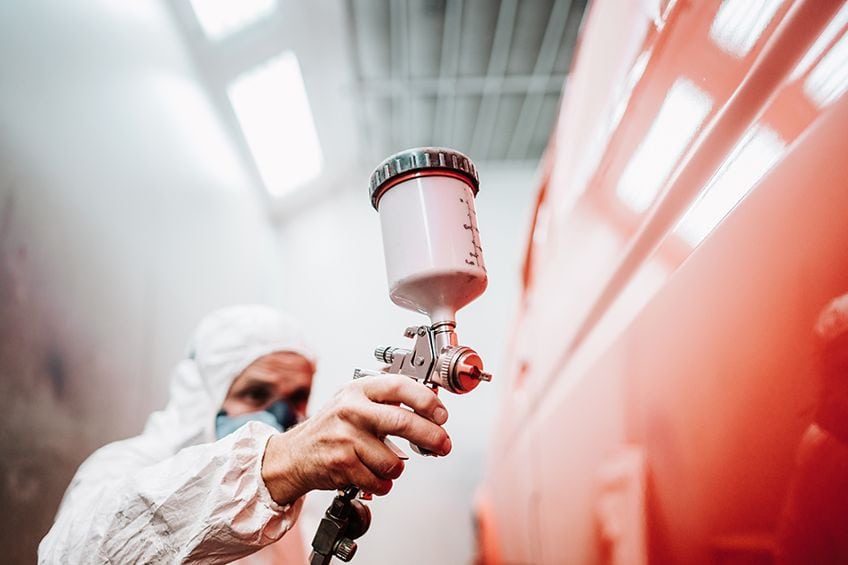
Best Gravity Feed LVLP Spray Gun: ASTRO LVLP Spray Gun
The Astro EuroPro Forged Spray Gun is regarded as the best choice for LVLP spray guns. The product has a gravity feed spray gun that is equipped with a plastic cup holder. The main advantage of this spray gun is its lightweight aluminum body, which makes it very durable and easy to keep clean, giving you very low maintenance work. The durable aluminum body also makes this paint sprayer corrosion-resistant, making it a piece of equipment that will last a lifetime. One of its other impressive features is the air curtain spray design, which can minimize overspray, producing a highly efficient spray gun.
- The forged body provides longer tool life and corrosion protection
- Stainless steel needle and fluid tip with a slick finish for faster cleaning
- “Air Curtain” design to minimize overspray and pollution
It is also equipped with a soft trigger that reduces fatigue, enabling you to paint for longer periods. You can also make use of a smaller air compressor without having to be concerned with the transfer efficiency. This paint sprayer has a stainless steel needle and a fluid tip, which makes it a perfect tool to use with waterborne materials and is very easy to keep clean. This spray gun is adjustable, allowing you better control over the paint, and has a quick thread technology, making the gun very easy to use. It is an ideal paint sprayer for use on small projects and can also be used with several different types of paint or materials.
PROS
- Has a soft trigger action reducing fatigue
- Light aluminum body, easy to use and transport
- Has an air curtain spray design reducing overspray
- Very durable due to the fluid tip and the needle that is made of stainless steel
- Easy to keep clean
- The gun is fully adjustable
- Is simple to operate because of the quick thread technology
CONS
- Slightly more expensive than other paint sprayers
- Needs time to get used to using it
- Not able to use at high speed
- Limited to small projects
- Fairly expensive
How Does an LVLP Spray Gun Work?
The LVLP spray gun is much more efficient than the HVLP (High Volume Low Pressure) spray guns, as they use less air and paint. They also give you a softer spray, which means there will be a lot less overspray than other spray guns. When you use a high-pressure spray gun, the paint mixes with air that is ejected with such a force that the paint moves through the air in all directions and often does not even reach the surface, wasting money and paint. However, these are better options for bigger paint projects.
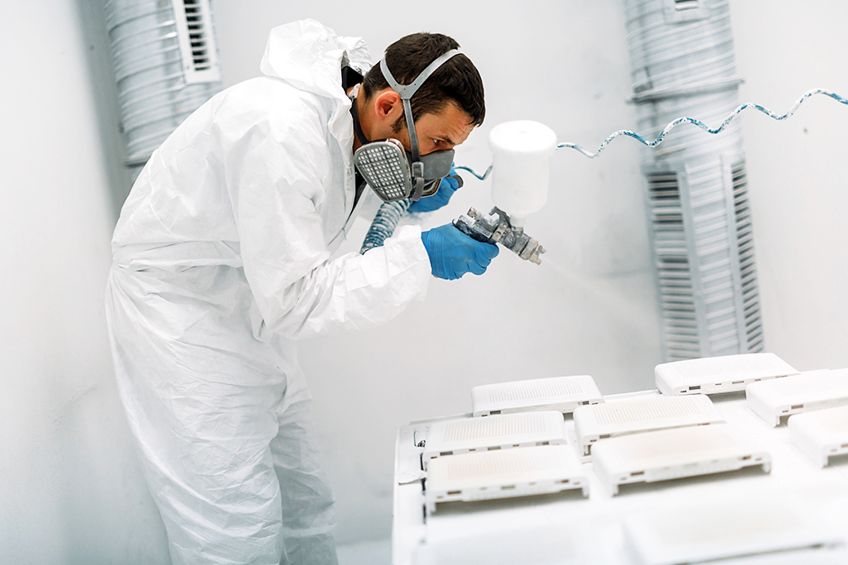
Since the LVLP paint sprayer uses much lower pressure and volume, it is a lot safer to use than the high-pressure spray guns and also a lot cheaper. Since the LVLP spray gun uses a smaller volume of air, it can operate with a smaller compressor and, therefore, needs less CFM (cubic feet per minute) volume as well as lower psi (pounds per square inch) pressure. The LVLP paint sprayer works at less than 10 psi and about 3 to 5 CFM. Perfect for smaller and more delicate paint jobs.
Some Technical Spray gun Terms Explained
What do PSI and CFM Mean? CFM and psi are used to indicate the performance of air compressors or air-powered machinery. CFM measures volume and psi measures pressure, and both of them together show the maximum pressure and volume that your air compressors can safely operate at. CFM or cubic feet per minute is the measurement of air your compressor can move in a single minute. PSI or pounds per square inch is the sum of the pressure in one square inch.
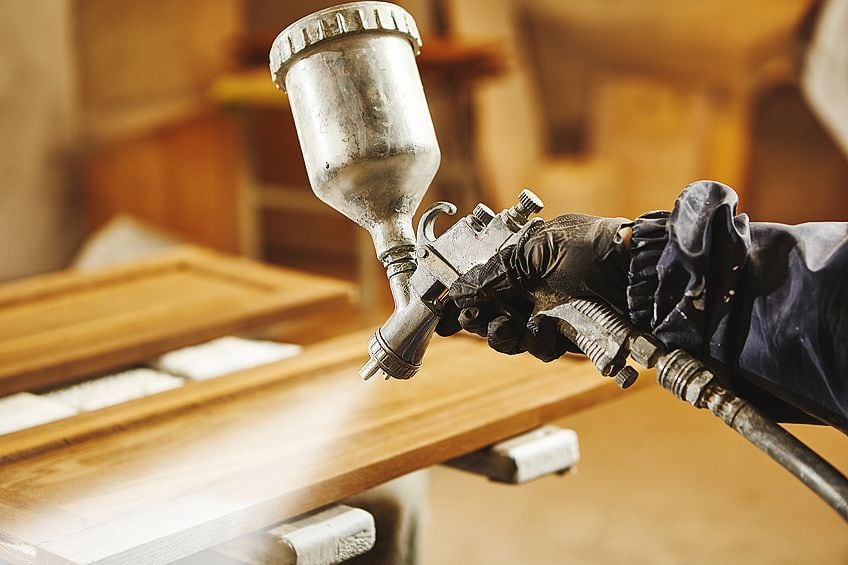
Let us explain by using a common illustration. When using your garden hose and switch the tap on, your water will flow out of the hose and will only reach a few feet in front of you. Now place your thumb over the end of the hose; this creates a smaller area for the water to flow through, thus restricting the water flow. The same amount of water will still flow through the hose but now at a much greater pressure, allowing the water to flow a lot faster and much further.
Differences between an LVLP and an HVLP Sprayer
In this article, we are concentrating mainly on the low-volume low-pressure spray gun, but what about the high-volume low-pressure, or HVLP paint sprayer? If you have to choose, which one do you buy? The answer to this question is not straightforward, as there are certain aspects you need to consider before purchasing the right spray gun for your application.
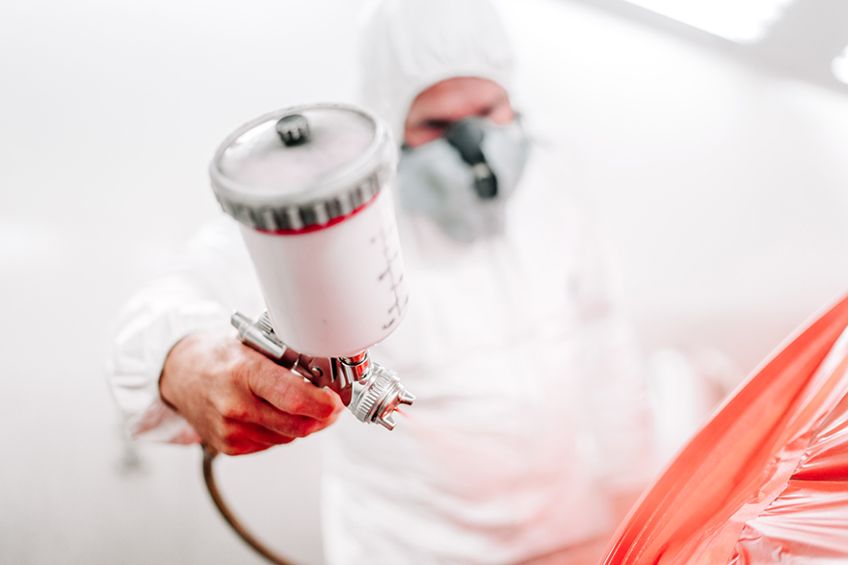
Paint Applications
The LVLP spray gun has a smaller fan spray pattern, which is usually about 8 to 10 inches, whereas the HVLP spray gun spray pattern is around 12 inches. This means that the LVLP spray gun will take longer to complete a medium-sized job, but the finish will be much smoother and of high quality. So, if your project is small and you need to have a fine smooth finish, for example, automotive paint spraying or furniture restoration, then the LVLP paint sprayer is the answer. However, if your project is bigger, then you need to go for the HVLP paint sprayer.
Do you want to respray your whole vehicle with metallic paint? Then you would use an HVLP paint sprayer, but if you want to touch up some chip or scratch marks on your vehicle, then an LVLP paint sprayer is the answer. This way you will end up with a good quality finish and the job will be done much faster than with the use of an HVLP sprayer.
Amount of Paint Wasted
The amount of overspray you produce when you spray paint is a very important aspect to consider, as it determines the amount of paint you are going to waste. By using an LVLP paint sprayer, you produce less overspray as the gun operates at 10 psi (pounds per square inch), meaning that this type of spray gun has a transfer efficiency of up to 80 percent. Whereas, the HVLP sprayer has a transfer efficiency of between 64 to 70 percent. This means most of the paint will land on the surface you are painting with very little overspray and helps you save money. Also, it will be less hazardous to the environment.
Compressor Size
If you are intending to use an HVLP spray gun, then you will need a very large compressor that can deliver 15 to 35 psi (pounds per square inch) pressure. These are available in pneumatic as well as turbine options. This type of compressor is very pricy, so you need to make sure this is the type of compressor you need for your project before you go out to buy one.
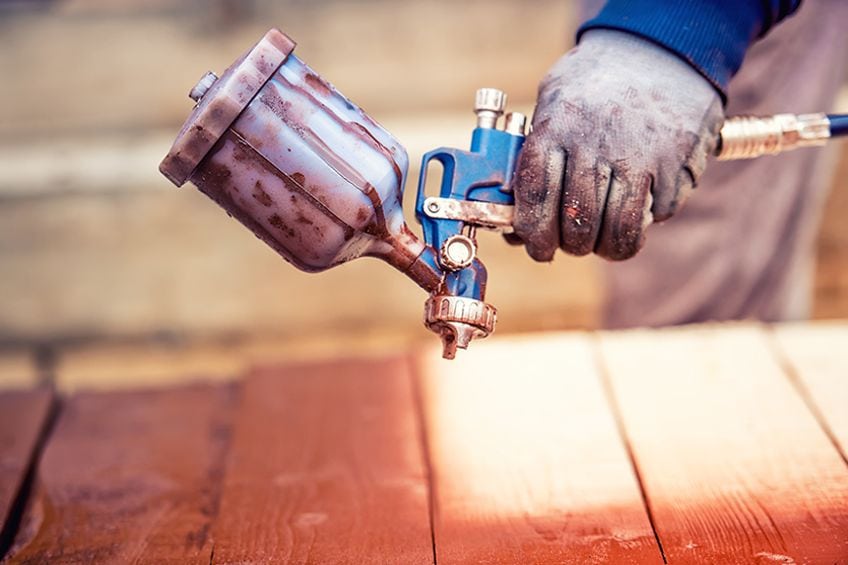
On the other hand, if you have decided that the LVLP spray gun for small compressors is right for you, then you will need a lot smaller compressor that will be much cheaper. The standard LVLP spray gun only needs to deliver 10 psi (pounds per square inch) pressure and has a smaller airflow rate of 5 to 8 cfm (cubic feet per minute), and there even some smaller units that run off 3.5 cfm. The type of LVLP sprayer that only needs 10 psi pressure, can be used on almost any type of compressor.
Paint Material
The LVLP spray gun gives you a soft fine atomized spray for more detailed work, which you need for clear coat and single stage enamels painting. They are great with waterborne paints, clear coats, enamel, acrylic, chalk paint, and oil-based mediums. However, they do not have a high enough volume for spraying high viscosity or metallic paints.
These metallic and high viscosity paints are best used with an HVLP paint sprayer, but you will have to thin the paints before you use them.
Comparison Chart
We have already discussed some of the main differences between the low-volume low-pressure spray guns and HVLP paint sprayers. However, to make it easier for you to understand, we have compiled a chart giving you all the differences at a glance.
| LVLP Spray Guns | HVLP Spray Guns | |
| Operating Pressure | 5 cfm at 10 to 25 psi (low cfm) | 20 cfm at 50 psi (high cfm) |
| Fan Width | Smaller | Wider |
| Transfer Efficiency | Up to 80 percent | 65 to 70 percent |
| Ease of Use | Needs time to practice and learn | Widely and easily used |
| Best Used by | Professionals | Beginners and DIY enthusiasts |
| Price | Much cheaper | Fairly expensive |
| Paint Overspray | Very little, very economical | A lot of overspray more paint wasted |
| Compressor Type | Can make use of a lot smaller and cheaper compressor | Requires a quality compressor, preferably with a turbine |
Advantages and Disadvantages of an LVLP Paint Sprayer
We have already discussed that an LVLP spray gun is best used for smaller projects and these types of spray guns have an excellent transfer efficiency, which means there is a lot less waste of material. The LVLP spray guns are also much faster than the HVLP spray guns, which makes them very popular with DIY enthusiasts as well as professional paint sprayers. However, with most products, there are not only advantages but also disadvantages.
The Pros of LVLP Sprayers
- Smooth and fine finish
- Excellent transfer efficiency producing a smaller amount of overspray and waste
- Compressors are a lot cheaper and smaller
- Equipment is portable
- Requires lower psi to operate
- Low cfm spray gun
- Price is affordable
- Sprays faster
- Can use waterborne paints
- Is best when used on Automobiles
The Cons of LVLP Paint Sprayers
- Can only spray thin materials
- Has a smaller fan width
- Cannot spray with high viscosity materials
- Takes time to practice before being able to use effectively
How to Clean Your Spray Gun
You have just completed your spray painting job and you are wondering how to go about cleaning your paint sprayer. Fortunately, the cleaning process is not all that difficult, but you need to follow the right steps. Remember, the spray gun needs to be cleaned immediately after you have finished your job. Leaving it for later runs the risk of the paint clogging and it will take much longer and more effort to get the paint sprayer clean.
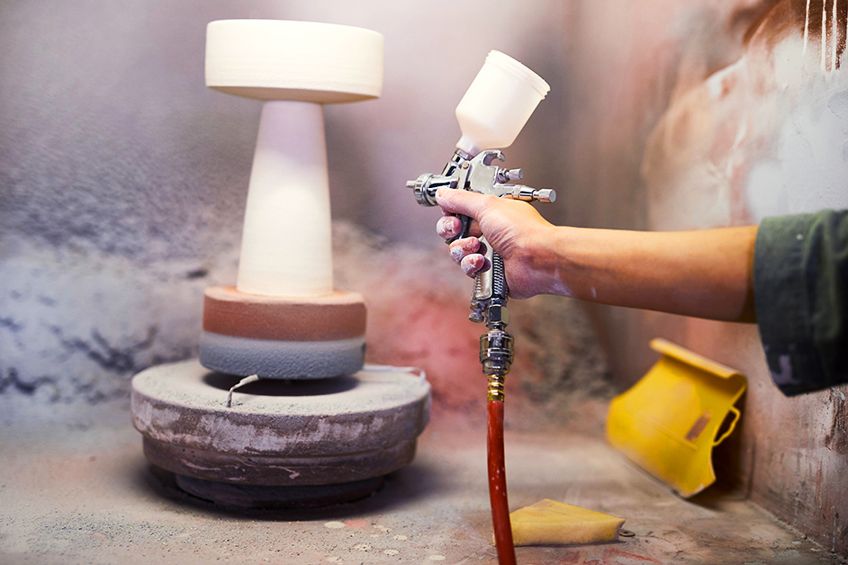
Disassembling the Paint Sprayer
The first step is to disassemble the spray gun, which for most of the sprayers is fairly easy. However, we do suggest that you follow the manufacturer’s instructions or do some research online. As you begin to disassemble the spray gun, try not to damage the smaller and more delicate parts, especially the needle and fluid tip. It is important to keep track of all the parts and separate the bigger pieces from the smaller pieces.
As you detach everything, place them in the same order, which will help you when it comes to reassembling.
Necessary Supplies for Cleaning
To clean the spray gun properly, you will need to have certain cleaning materials. Here is a shortlist of all the materials you will need. Include protective equipment if you are going to use paint thinners or cleaning solutions:
- Warm soapy water
- Gloves
- Goggles
- Cleaning solution or paint thinners
- Paper towels or clean rags
- Cleaning brush that is usually supplied with the sprayer
- Toothpicks
- Wrench usually supplied with the sprayer
Cleaning the Paint Sprayer
The process of cleaning the spray gun is fairly straightforward if you follow the five important steps, this will ensure your spraying equipment is properly clean. This can save you time and money in the long run and help to keep your paint sprayer in good condition.
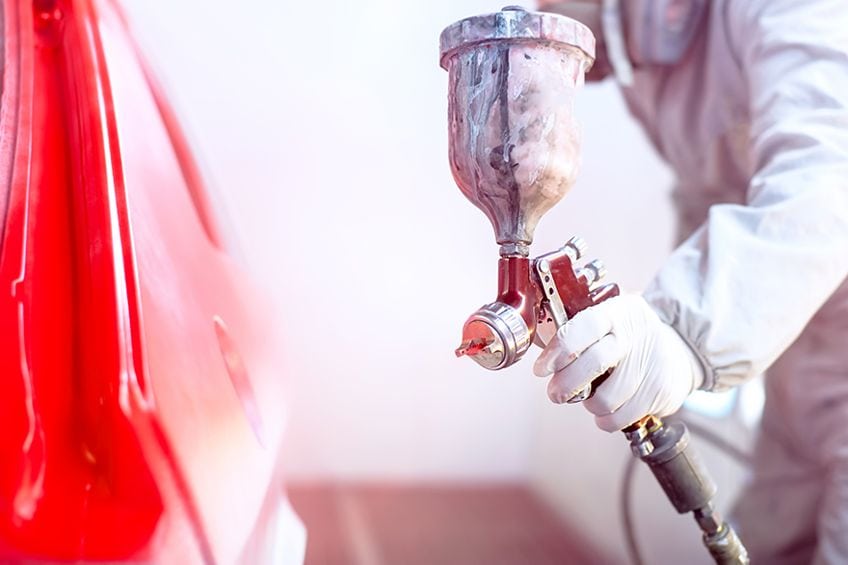
Clean the Paint Cup
The paint cup is the first thing you remove from the gun, and it is usually full of paint or fluid. Fill the cup with paint thinner or cleaning solution, then replace it with your gun. Shake it well and pull the trigger and allow the cleaning solution to spray into an empty bucket or container. This process allows the thinners to run through the inside mechanism of the paint sprayer, removing some of the excess paint. Next, take some paper towel or your rag and dip it into some paint thinner, then clean the inside of the cup.
You can also clean the inward part of the cap. Make sure you wear your gloves when doing this, as you do not want the thinners to come into contact with your skin. Set the paint cup down onto a piece of paper towel and allow it to dry.
Disassemble the Rest of the Sprayer
Begin by carefully removing the fluid needle, take care, as it is spring-loaded and may shoot out and go missing if you do not hold it in place when removing. Next, take the wrench and unscrew the air cap inner part and set it to one side.
Clean the Inner Parts of the Sprayer
By using the paint thinner for this process, will give the parts a better clean but you can also use warm soapy water. When doing this part, ensure you do not damage any of the smaller and delicate components. We suggest you take the inner and outer caps together with the sprayer’s main body and immerse them in a bucket full of paint thinner. Allow them to soak for a time which will loosen the paint.
However, it is not recommended that you place the fluid needle and spring into the bucket, as it may damage them, or you could lose them during the process.
Wipe all the Parts down Properly
After the parts have soaked for a time, remove them from the paint thinner and begin wiping each one down. To get them properly clean, you may have to use toothpicks and a cleaning brush. Use the cleaning brush to remove any remaining residue and the toothpicks to get into those hard-to-reach places like ridges and grooves. Now take a paper towel or clean rag and wipe all the cleaning solution off of the fluid needle and spring.
Reassemble the Spray Gun
Once all the parts are clean and dry, you can start to reassemble the spry gun. First, place the spring and needle in place and then screw the inner air cap on, and then place the outer air cap on. Screw the paint cup back onto the sprayer’s body, replace the cap, and the job is done. If you are in doubt, then refer to the manufacturer’s instructions or follow the instructions on the website.
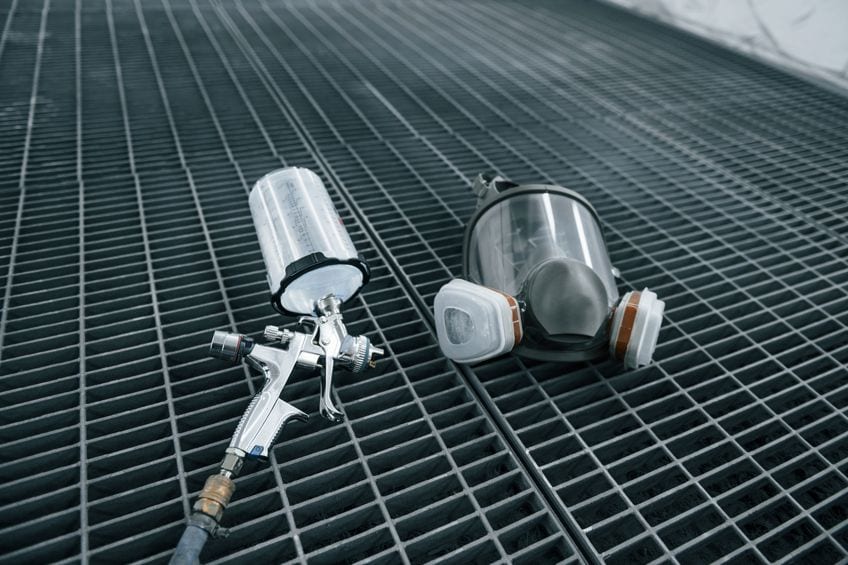
Benefits of Using a Low Volume Low-Pressure Spray Gun
You are already contemplating purchasing your LVLP spray gun, but you want to know if it is worth your while. In other words, are there any real benefits for buy an LVLP sprayer? Read on and we will try to convince you that there are some real benefits to owning your LVLP spray Gun.
Makes Painting Jobs Much Easier
Many times, when painting, you face the problem of trying to get into those hard-to-reach places with your paintbrush or roller. This is particularly the case when you are painting furniture; it is very easy to miss those corners and areas with your brush. However, if you are using your LVLP spray gun, those hard-to-reach places are no problem.
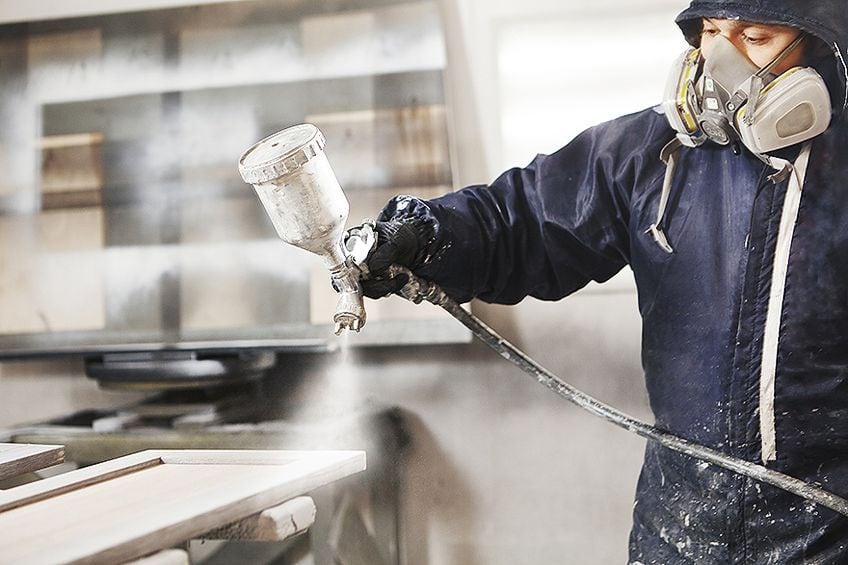
Even Consistent Finish
When painting with a paintbrush or roller, it is not easy to get an even finish. However, with your LVLP spray gun, you end up with an even and smooth finish every time. This is because your brush leaves marks and some places have more paint than other areas. Using an LVLP spray gun will solve all of these problems.
Save Paint
Today the cost of paint is fairly high, so you want to save as much paint as possible wherever you can. When using a paintbrush or roller, paint can drip off or cause a rough finish, especially if you are painting an uneven surface. When using an LVLP spray gun, you will minimize any waste and save money.
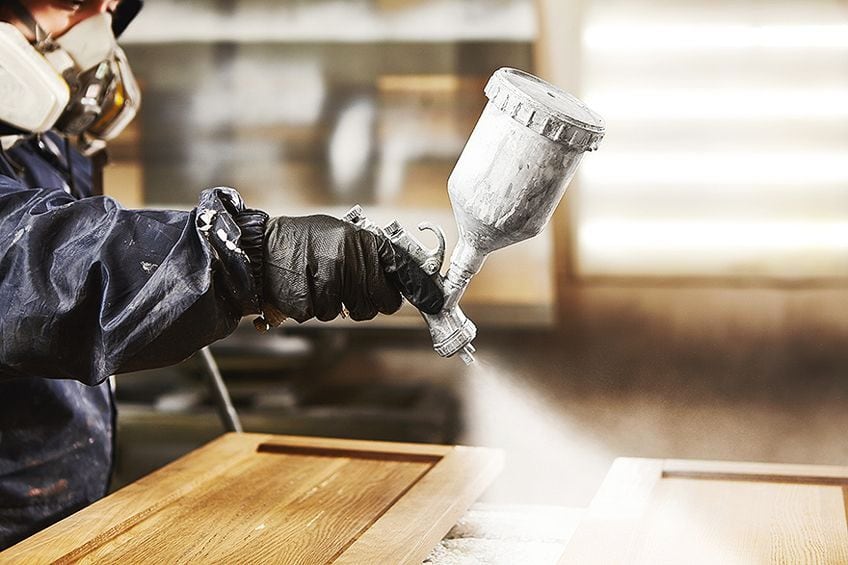
Precision Work
If you are busy painting a delicate or intricate piece of furniture, you will need an LVLP spray gun to give you that perfect detailed finish. You do not have to be a professional painter to operate an LVLP spray gun, because the needle and air mixing within the gun does the work for you, giving you just the right amount of paint on your surface. We guarantee that once you have used the sprayer, you will never want to go back to a brush or roller. You can also do the job in half the time.
Price
Once you have made the initial purchase of your LVLP spray gun, you will save money and time. Once you have mastered the various techniques, you will be able to make a small amount of paint go a long way. Depending on what type and quality of LVLP spray gun you want to buy, the initial purchase is affordable, and you will benefit more each time you use it.
If you do a lot of painting, you could really benefit from an lvlp spray gun. In this article, we have given you an in-depth review of the best lvlp spray guns. We have also discussed the advantages and disadvantages of using this kind of spray guns, and given you a run down of how to use and maintain your gun.
Frequently Asked Questions
Is an LVLP Paint Sprayer Better Than an HVLP Sprayer?
An LVLP spray gun kit is a better option than the HVLP (high volume low pressure) options, as it is much faster and more effective. The HVLP spray gun gives you a more course-finished surface, while the LVLP spray gun leaves a much finer and smoother finish. However, it is dependent on your application and, in many cases, personal preference.
What is an LVLP Spray Gun?
The LVLP sprayer is more effective at leaving a smooth and even surface finish in comparison to the other types of sprayers. The spray gun can also use a smaller or regular compressor, as it uses a low-volume and low-pressure system.
Can you use Latex Paint in an LVLP Spray Gun?
Yes, you just need to thin it before using it and it will give you a great quality finish. If you do not thin the paint, it will clog the nozzle and provide an imperfect finish. The paint will also be more difficult to clean once you are done painting.
Can the LVLP Sprayer Last a Long Time?
A good brand of low cfm spray gun is durable and of high quality. The spray gun usually comes with parts that are corrosive-resistant so it could last for up to 10 years or more. Remember, cleaning the spray gun will make sure the sprayer lasts.
Does the LVLP Sprayer Have any Disadvantages?
The main inconvenience is that it can drip paint, which can make quite a mess. Usually, the drip is small and occurs at the nozzle, but there are spray guns that are designed to get rid of this problem. Also, the low-volume low-pressure spray gun is not suitable for larger jobs.
What Are Some LVLP Spray Gun Applications?
This type of spray gun is ideal for painting intricate and smaller items that have special designs on them. You can also use them for painting larger areas; however, this may take a long time to complete. They are used extensively by hobbyists, in the auto trade, for woodwork, marine, and industrial applications.
What Is Meant by a Siphon or Gravity Feed LVLP Spray Gun?
The gravity feed gun comes with the paint cup on top of the gun and the siphon-feed guns come with the paint cup at the bottom of the gun. The gravity feed spray guns are a better option, as they require less air pressure to operate and are easier to handle. The siphon feed spray guns require greater air pressure and are mainly used for specialized coatings. When choosing your spray gun, you need to take into account the material you are going to spray with.
Larissa Meyer is a 32-year-old mother from Michigan and creative spirit since childhood. Her passion for painting and drawing has led her to an education as an illustrator and a career as a freelance graphic designer. She has a Bachelor of Fine Arts in Illustration and a degree in Graphic Design. Larissa is a talented artist who is able to master a wide range of styles and techniques to bring her artistic vision to life. Her greatest passion is currently fluid painting and epoxy resin art. Larissa’s love for art and her knowledge and experience in illustration make her the perfect Creative Director for our fluid-painting.com team. She is the creative head of our team and shares her passion and knowledge with our community through articles and tutorials.
As a mother of a 2-year-old daughter, Larissa also understands the importance of fostering creativity in early childhood. She uses her experience and knowledge to help other parents inspire their children and develop their artistic skills as well.
Learn more about Larissa Meyer and about us.

